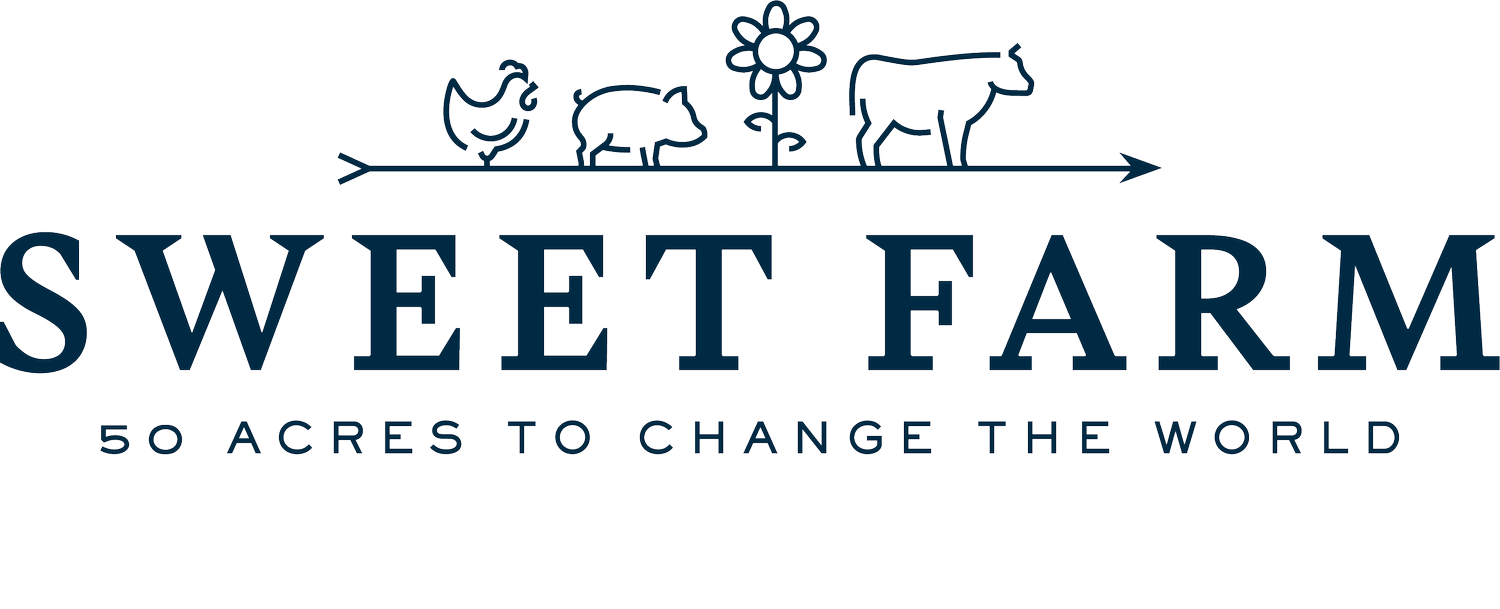Cover Crops and Fall Gardening
October in the Garden
Autumn has settled in, the air is crisp, and our fields are golden with the last light of the growing season. This month, we’re celebrating the close of another fruitful summer, planning ahead for winter and spring, and rallying support for an important part of farm life—our hay supply!
The Magic of Fall Cover Cropping
After we harvest, the bare soil is vulnerable. Mother Nature hates bare soil and will fill it with weeds the first chance she gets. So what can you do? ANSWER: cover crops!
Cover cropping is the practice of seeding crops like rye, clover, or vetch to protect and improve the soil rather than for harvest. Planted in between crops or in the off-season, cover crops enhance soil health by preventing erosion, improving structure, and adding organic matter. They also help with nutrient management by fixing nitrogen, suppressing weeds, and creating a healthier environment for beneficial insects. They can even break up compaction and help aerate your soil! Sowing a cover crop in fall protects and revitalizes your garden for spring.
Why cover crop?
Prevents erosion: Roots hold soil in place through winter rains and snow.
Builds soil health: Legumes like crimson clover and hairy vetch add nitrogen naturally.
Boosts biodiversity: Cover crops feed beneficial insects and microbes.
Suppresses weeds: A thick green blanket keeps unwanted plants in check.
Pro tip: In Zone 6b, sow cover crops now—before the hard frost—to let them establish roots. When spring comes, simply cut them down and leave them on the soil as mulch, or turn them into the soil for a rich, organic boost.
Fall is ideal for gardening!
October is ideal for planting perennials, trees, and shrubs. The cooler temperatures help roots establish before winter sets in, and make gardening much more comfortable. Also, it's a great time for end-of-season sales in garden centers and stores! (Our own store is having a sale on all our gardening tools and summer supplies!)
October is also an excellent time to plant bulbs for color next spring. With less heat and harsh sun, and more rain, the ground is softer so it's easier to plant them as deep as they need to go. Pro tip!: Sprinkle crushed red pepper flakes over any disturbed soil after you've planted to keep the squirrels from digging up and eating your bulbs. Believe us, they know exactly what you are doing when you are digging around in your yard!
Consider adding native plants that will provide food for local wildlife. Check out this link to search for plants that are native to your area, and that support specific types of wildlife.
What to Plant Now in Zone 6b
It’s not too late to keep your garden growing! Here in Growing Zone 6b, we still have opportunities for planting cool-weather crops and perennials.
Here’s what you can plant in October:
Greens: Spinach, mache (corn salad), and winter-hardy kale varieties.
Garlic: Plant cloves now for next summer’s harvest—choose hardneck types for best overwintering.
Spring Bulbs: Daffodils, tulips, crocuses, and alliums go in now for a burst of color come April.
Herbs: Overwinter chives, rosemary, cilantro, and dill in pots or cold frames.
Cover Crops: Rye, winter wheat, or a crimson clover mix to feed your soil and protect it through the cold months.
Read more about October gardening tasks in your zone here!
Oh Hay! It’s Fall!
Each fall, we have to stock up on high-quality hay to keep our rescued animals well-fed and cozy through the winter while their pastures are dormant.
Here’s how you can pitch in:
Sponsor a Bale: $10 buys one bale of hay - we go through 25-30 bales of hay each week!
Share our story: Spread the word about Sweet Farm’s mission—every share helps more than you know.
Your support keeps our four-legged family healthy, happy, and munching all winter long.
October reminds us that gardening is as much about rest and renewal as it is about growth. As you tuck your garden in for the winter, we hope you’ll also help us care for the rescued animals who call Sweet Farm home.
With gratitude and warm cider,
Anna





